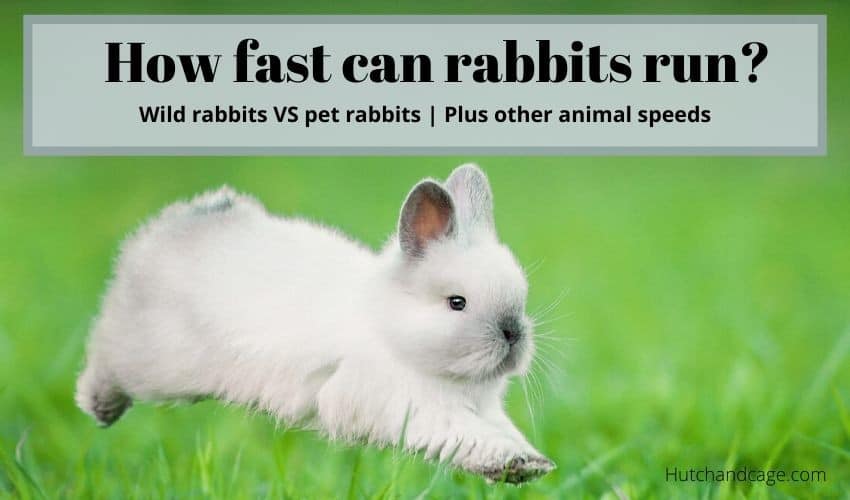Perhaps you have seen a wild rabbit in a meadow before. They will hold very still and then, in the blink of an eye, vanish! This may lead you to wonder how fast they really are.
How fast can rabbits run? Rabbits can run anywhere between 25-45 mph. This gives this prey animal a fighting chance when it comes to escaping predators, hunters, and the like. The fastest is without a doubt the jackrabbit, which can achieve the max speed of 45mph. Your Bunny at home is capable of 25-30 MPH
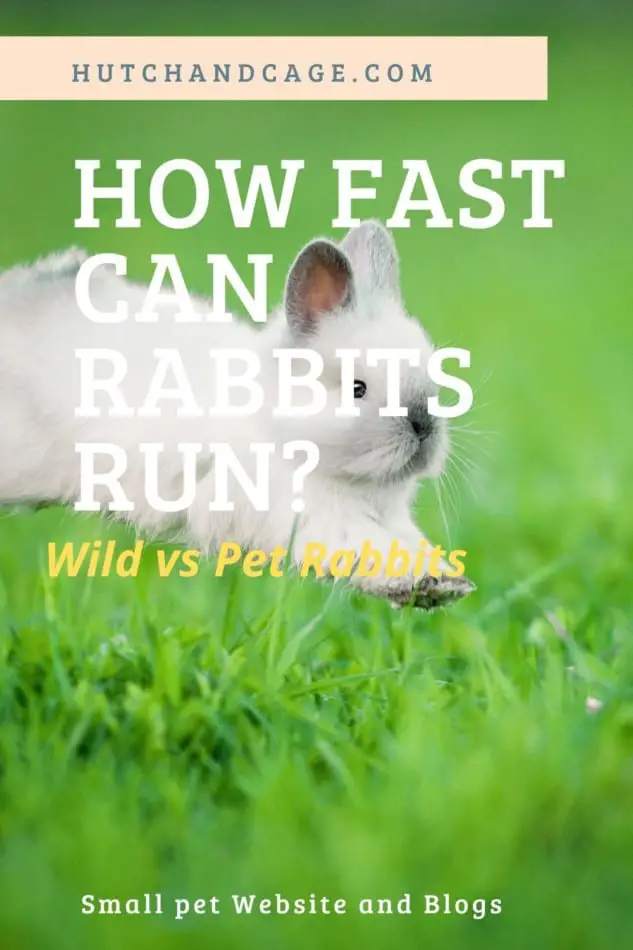
Table of Contents
Rabbits Must Be Fast to Survive
Predators find rabbits a popular meal. These little guys are hunted by wolves, coyotes, eagles, owls, red foxes, badgers, lynxes, mountain lions, and more.
This means that rabbits must be fast to survive. A split second can make the difference between death, and the safety of the burrow.
Should they become captured, rabbits will also bite and can deliver a powerful kick. Zig-zagging is their primary mode of evasion. Above all, rabbits are swift and agile.
Rabbits Sleep With Their Eyes Open
Not only are rabbits quick, but they sleep with their eyes open. When it comes to encroaching predators, this gives them an edge. To keep them damp, their eyes have what are called nictating membranes. While they sleep, these produce moisture. The actual eyelids of the rabbit remain open.
The nictating membrane is a sort of transparent eyelid that they can see movement through, and remove immediately should a predator become a risk. This keeps their vision unblurred and clear.
Rabbits see best during the hours of dawn and dusk. So, this is when they are the most active; and when they must move the fastest to avoid becoming a meal.
Rabbits Breed Often Since Few Young Will Survive
You have probably heard the term, ‘breeding like rabbits.’ Indeed, rabbits do breed frequently. They also produce litters of as much as 14. This is because, if rabbits are vulnerable prey, baby rabbits are even more so.
They are not even particularly quick. Should a predator find their nest, or if the babies are away from its safety, they are an easy catch. In a nutshell, rabbits must have big litters in order for the population to survive.
Baby rabbits are called kittens. Domesticated kits have an exponentially higher chance of survival, with the proper care.
Never keep a male and a female rabbit together or they are guaranteed to breed, and you will have more kits than you know what to do with!
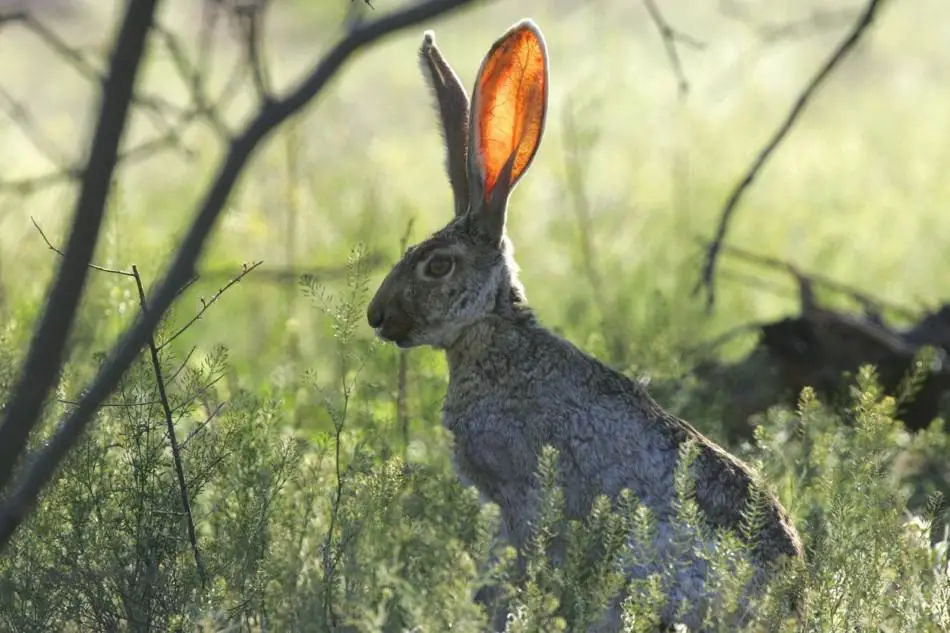
Keeping Your Rabbit Safe From Pets at Home
There are some pets that are natural predators: cats, dogs, and snakes, primarily. Some of these animals will not hesitate to have a go at your rabbit if they are given the chance.
They may even try to eat them! This is not always the case, but it is better to be safe than sorry.
Never leave your rabbit unattended around a pet that could potentially be hostile. There are also some safety steps that you should take in general.
First off, place your rabbit cage somewhere secure. The cage should be out of the reach of pets or small children. A private bedroom is ideal.
The cage itself should also be appropriately secure. The best choice is a solid, chew-proof cage made of metal. The bars must be close enough together that your rabbit cannot escape (and so nothing can get in, either).
What Rabbits Are the Fastest?
There are 13 different wild rabbits breeds out in nature. 7 of these are a subtype of the cottontail.
One of the slowest rabbit breeds is the snowshoe hare, averaging at about 27mph. The fastest is without a doubt the jackrabbit, which can achieve the max speed of 45mph.
Your everyday cottontail rabbit is capable of up to 30-35mph. This is incredibly fast for such a small animal, and their speed serves them well.
Let’s compare the speed of a rabbit to other animals
| House Mouse | 8.1 MPH |
|---|---|
| Pig | 11 MPH |
| Polar Bear | 17 MPH |
| Brown Bear | 21.7 MPH |
| Elephant | 24 MPH |
| Pet rabbit | 25 MPH |
| Domestic Cat | 29 MPH |
| Giraffe | 29.2 MPH |
| Greyhound Dog | 39.5 MPH |
| Wild Rabbit | 40 MPH |
| Zebra | 40 MPH |
| Fox | 42 MPH |
| Ostrich | 43 MPH |
| lion | 49.7 MPH |
| Horse | 54 MPH |
Pet Rabbits Are Sociable and Active
In contrast to their more timid wild cousins, domesticated rabbits can be quite friendly and affectionate. They express themselves with a series of squeaks, hops (happy hops called ‘popcorning’ in particular), foot-thumps, and the like.
When they get along, rabbits will groom each other. They may even be cuddly with their people.
When rabbits are spayed and neutered, you can usually pair males or females together fine. Whether they get along can depend on the individual. Normally they are quite sociable. This makes sense, considering how huge their litters are.
This means that, once you gain its trust, your rabbit should be happy to interact with you, friends, and family. Like their wild counterparts, domesticated rabbits are also quite lively and quick.
One of the best ways to bond with them is with some good, old-fashioned playtime. Exercise is something that all healthy rabbits love.
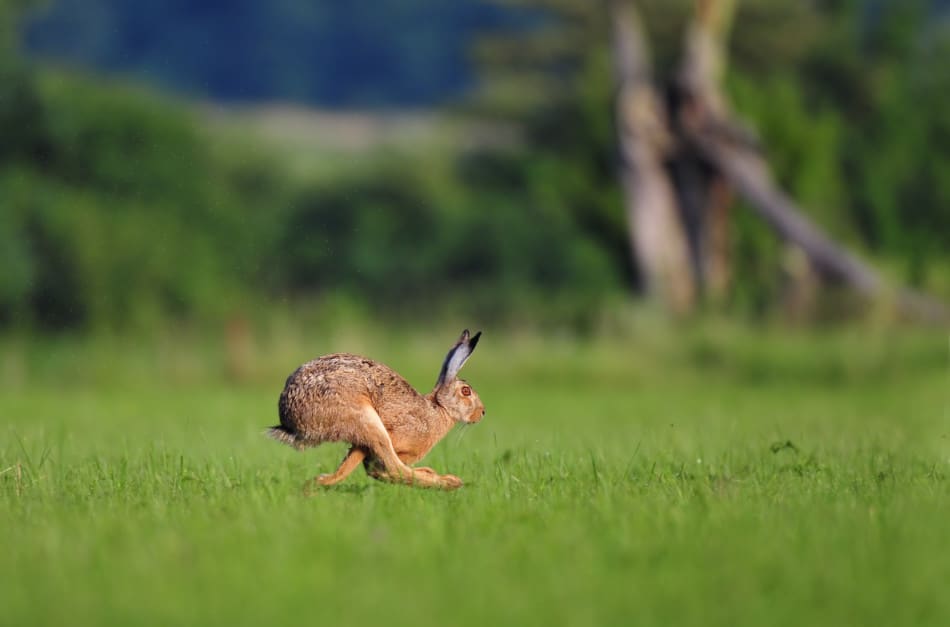
Let Your Rabbit Run and Get Exercise at Home
There are some great ways that your domesticated rabbit can get exercise at home. One of the best and simplest is letting them out to explore.
You see, unlike smaller rodents, rabbits have long backs and are unable to use an exercise wheel. To get the speedy running in that they need, they must be free from their cage every once in a while.
Before you let your rabbit out, be sure that the area is rabbit-proof. Stowaway any loose cords that they might chew. Most houseplants are toxic to animals and also pose a risk.
Finally, cover any holes they might hide in and ensure that no doors will unexpectedly open. Once all of this has been done, you may let your rabbit out to exercise and explore.
There are times that you may be busy and unable to let your rabbit out of their cage. While this freedom is a necessity, there are ways you can maximize the space inside their cage as well.
First off, the obvious one: pick a big cage. The cage should be 6 times the size of the rabbit, as a general rule. This is especially important when the cage is where they will be spending the majority of their time.
With a sizable cage, they will have room to run -and play- at their leisure. The height of the cage is also very important as they love to hop and jump and need headroom to do so.
To keep your rabbit entertained, you can also find plenty of rabbit toys online or at your local pet store.
What Rabbits Eat In the Wild For Energy
To move as fast as they do, rabbits have to keep their energy up!
In fact, they must eat almost constantly because they are so active. In the wild, rabbits consume mostly grass and hay. These plants are full of fiber, which makes them ideal.
Rabbits have specially-designed digestive systems and require fiber nutritionally above all. Along with hay, wild rabbits are happy to help themselves to fresh greens and the like.
The secondary reason that rabbits graze continuously is to keep their teeth in check. Like many rodents, their teeth continue to grow all throughout their life. They are filed down to the proper size as rabbits chew.
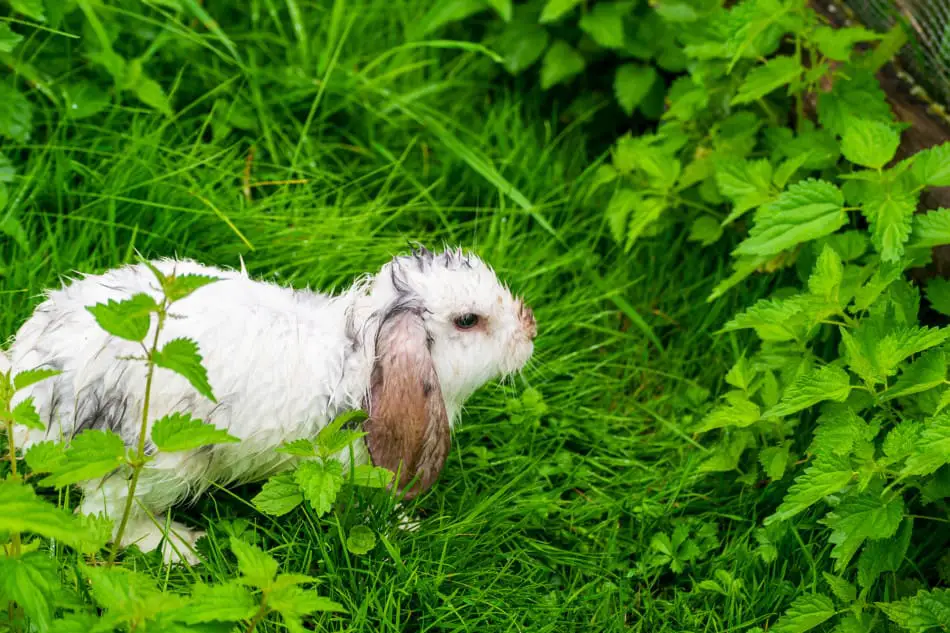
What You Should Feed Your Rabbit at Home
At home, rabbits are treated to a diet with much greater variety! Along with their staple hay, they can have pellets, fruits and veggies, and more.
Because it is low in sugar and high in fiber, Timothy Hay is one of the best types available. Just make sure that the hay has been cleaned of pesticides properly. The best place to purchase this hay is at your local pet store, or online.
Pellets can also be found there. These condense the required fiber and nutrients for rabbits into pieces that are bite-size. With mixes, rabbits and other rodents tend to pick and choose what they eat.
This all-too-easily leads to nutritional deficiencies, obesity, and the like. Pellets will ensure that your rabbit gets everything they require in a meal.
Finally, throw in some fresh fruits and veggies to make your rabbit really happy. They consider these a lovely treat or snack. Bell peppers, bok choy, carrot tops, romaine lettuce, strawberries, blueberries, and apples are just a few of these that they can have.
Conclusion: How fast can rabbits run?
So, in a nutshell, wild rabbits can run very fast up to 45mph. This is primarily to help them survive. Your very own pet rabbit may be able to reach up to 30-35mph!
Your rabbit may not need to be as active at home, but they are still lively critters and should get plenty of opportunities to stretch and run.
To keep your domesticated rabbit happy, make sure that they get lots of exercise. Equally important is the proper fuel! Let your rabbit out of their cage to run and feed them correctly, to help them live a long, healthy and happy life.

